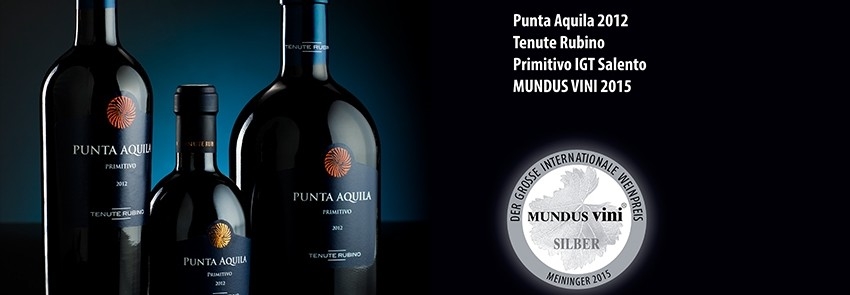NOT ONLY MAGNUM. THE CHARACTERISTICS OF LARGE BOTTLES

Last week we received great news: our Punta Aquila 2012 was awarded silver medal at the MUNDUS VINI International competition. A prize that coincides with the official presentation of a new special packaging of the same wine, now available in a very smart magnum bottle too.
The 1,5 litre bottle is the most common amongst special formats, its name suddenly reminds of grandeur. A magnificence that is emphasized even more while rising through the inviting scale of special sizes. The usage of the French word grandeur is not casual, because throughout history big bottles have been used to contain champagne. Big containers for big, lavish occasions. That’s why large bottles are named after majestic kings of ancient times: from Salomon and Mathusalem to the hard to pronounce Nabuchodonosor.
Large bottles are named as follows:
Magnum 1,5 litres (equal to 2 75cl bottles)
Jéroboam 3 litres (4 bottles)
Réhoboram 4,5 litres (6 bottles)
Mathusalem 6 litres (8 bottles)
Salmanazar 9 litres (12 bottles)
Balthazar 12 litres (16 bottles)
Nabuchodonosor 15 litres (20 bottles)
Salomon 18 litres (24 bottles)
Primat 27 litres (36 bottles)
Melchizedec 30 litres (40 bottles)
Anyway, the dimension of the bottle is important not only for aesthetics, but because it deeply affects the wine ageing process. It’s important to remember that, just as an apple keeps on ripening even after it has been picked from the tree, wine is a living product, in continuos evolution. Because of that, it needs to be defended from oxidation. Therefore, the cork plays a key role: it guarantees that just the correct amount of oxygen flows inside the bottle, letting the evolution process proceed slowly. Totally avoiding the contact between oxygen and wine would not be wise neither.
Thus, the more capacious the bottles, the more suitable they are for wine ageing. Because the amount of oxygen that flows inside is less if compared to the total amount of wine in the bottle. This allows a slower evolution process and a better development of all the organoleptic characteristics of the wine. Speed does not rhyme with quality, especially when it comes to oenology. Therefore, if you are planning of ageing wine yourself, think about large bottles, they will be capable to delight your sight as well as your palate.